25
How Dairy Stops Bisphosphonate Absorption (And What To Do)
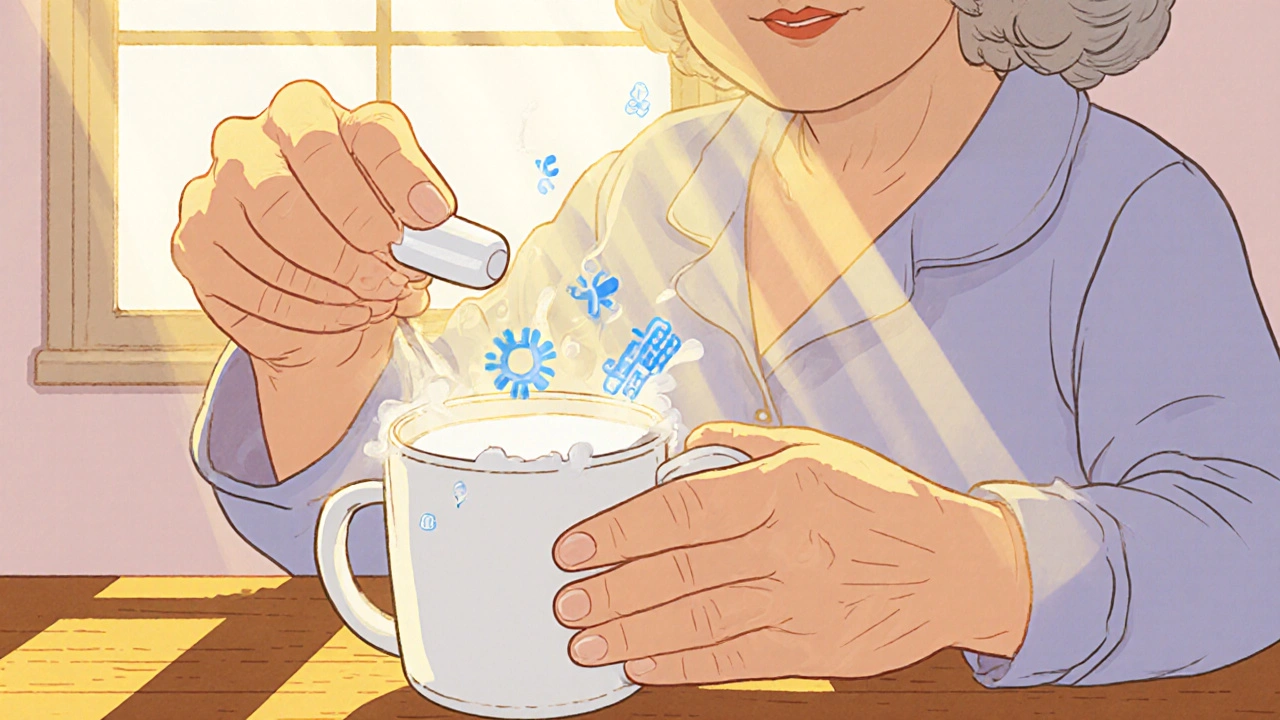
Bisphosphonate Absorption Checker
Will This Interfere with Your Bisphosphonate Absorption?
Enter the food or drink you plan to consume after taking your medication to see if it will interfere with absorption.
Result:
Why a Glass of Milk Can Undo Your Osteoporosis Pill
Imagine you’ve just taken your osteoporosis pill, followed the doctor’s advice to the letter, and then reach for a cup of coffee with a splash of milk. In that moment you might feel perfectly fine, but you’ve just cut the drug’s effectiveness by up to 90%. The culprit? Dairy’s calcium and other divalent cations that bind to the medication and keep it from being absorbed.
Bisphosphonates are a class of anti‑resorptive medicines that slow down the activity of bone‑eating cells called osteoclasts. They are the go‑to treatment for osteoporosis because they can lower vertebral fracture risk by 40‑70% and hip fracture risk by about 45%.
Because their oral bioavailability is already tiny-usually less than 1%-any food that interferes with absorption can make the dose practically meaningless. That’s why bisphosphate absorption is such a hot topic in bone health circles.
How Oral Bisphosphonates Work (And Why They’re Fussy)
When you swallow an oral bisphosphonate, the drug first meets the acidic environment of the stomach. The low pH keeps the molecule in a soluble form that can cross the stomach lining. Within minutes, the stomach empties and the medication reaches the duodenum, where the pH rises. If the drug encounters calcium, magnesium, or iron at this point, it instantly forms an insoluble complex that can’t be taken up by the intestine.
Alendronate (Fosamax) and Risedronate (Actonel) are the two most common oral bisphosphonates. Their absolute oral bioavailability hovers around 0.6‑0.7% for alendronate and 0.6‑1.0% for risedronate, according to FDA prescribing information.
If you eat or drink anything containing calcium, magnesium, or even a high‑acid juice like orange juice within 30‑60 minutes, those ions seize the drug and prevent it from being absorbed. Studies such as Zielińska et al. (2022) showed a 80‑90% drop in absorption when participants consumed 30‑40 g of cheese alongside a 100 mg risedronate dose.
Dairy’s Double‑Edged Sword
Dairy products are rich sources of calcium (≈ 300 mg per 8‑oz glass of milk) and magnesium. When you sip milk right after taking a bisphosphonate, those ions rush to the duodenum and lock the drug away in a chalky precipitate.
Other calcium‑rich foods-cheese, yogurt, fortified cereals-behave the same way. Even a modest serving of cheese (about 30 g) can bind 80‑90 mg of a 100 mg risedronate dose, essentially neutralising the medication.
It’s not just calcium. Magnesium supplements, antacids, and certain multivitamins also contain divalent cations that interfere with the same absorption pathway.
The Official Timing Rules (And How to Make Them Work for You)
- Take the pill first thing in the morning, ideally on an empty stomach.
- Swallow with 6‑8 oz of plain water-no coffee, tea, juice, or milk. \n
- Stay upright (sitting or standing) for at least 30 minutes after dosing.
- Wait a full 30 minutes before any food or non‑water beverage for alendronate; wait 60 minutes for risedronate and ibandronate.
These steps line up with the gastric emptying time, which is roughly 30‑45 minutes for most healthy adults.
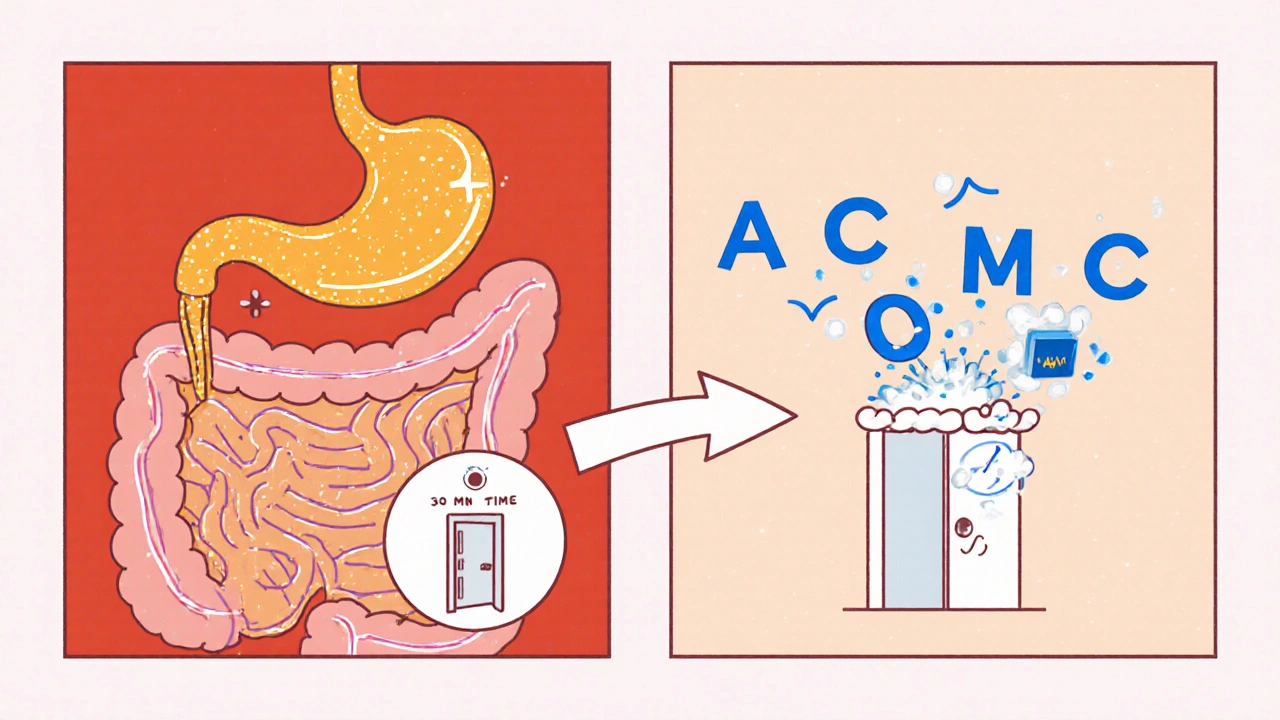
Real‑World Pitfalls and Simple Workarounds
Patients often forget the waiting period or reach for their usual breakfast beverage. In a Drugs.com forum thread (2022‑2023), 60% of users admitted to breaking the rule at least once, most often with dairy.
Here are five low‑effort tricks that “real‑life” patients swear by:
- Set a phone alarm. Label it “Bisphosphonate - no food until 30 min”.
- Keep a dedicated “med water” glass next to your bedside lamp.
- Prepare a non‑dairy breakfast (e.g., oatmeal with almond milk) for after the waiting window.
- Use a weekly pill organizer with a separate compartment marked “before breakfast”.
- Ask your pharmacist for a printed timing chart; studies show counseling improves adherence by 37%.
When the Rule Becomes Too Rigid: Injectable Alternatives
If standing upright for 30 minutes feels impossible-think arthritis or limited mobility-consider switching to a non‑oral option.
Denosumab (Prolia) is a subcutaneous injection given every six months. It bypasses the gut entirely, so food doesn’t matter. The downside is a much higher price tag-roughly $1,600 per dose in the U.S.
Teriparatide (Forteo) is a daily injection that actually stimulates bone formation rather than just slowing breakdown. Again, no food interactions, but costs can exceed $2,000 a month.
For patients who can’t meet the strict fasting requirement, the cost advantage of cheap generic alendronate ($4/month) evaporates because missed timing makes the drug ineffective. In that case, a short‑term switch to an injectable may be the smarter financial move.
New Formulations Trying to Solve the Problem
The FDA approved a delayed‑release version of risedronate (Atelvia) in 2023. You can take it with food, but you still need to avoid calcium‑rich meals for the first hour. Early adopters report a 20‑30% improvement in adherence.
Research labs are also testing a pro‑drug called BPS‑804. Phase 3 data suggest 3‑4× higher bioavailability and minimal binding to calcium, potentially eliminating the fasting rule altogether.
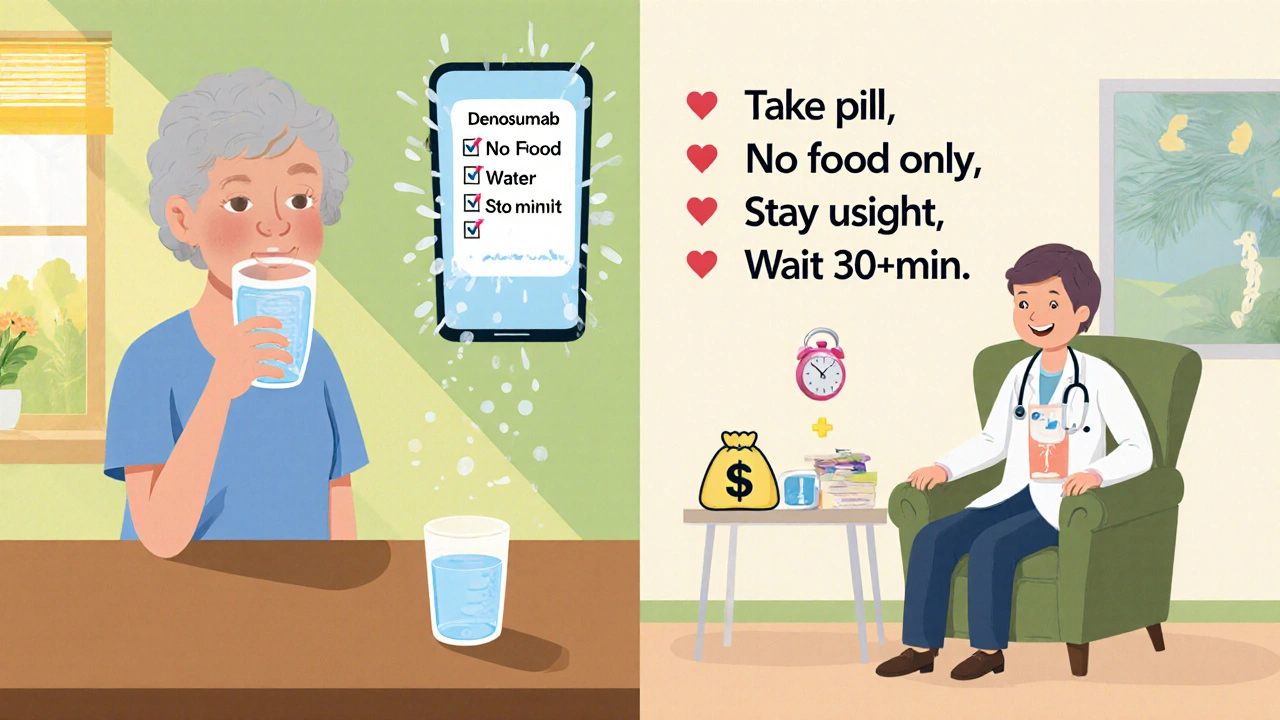
Quick Checklist to Protect Your Dose
- Take pill with 6‑8 oz water only.
- Do not chew, suck, or let the tablet dissolve in mouth.
- Remain upright for at least 30 min.
- Wait 30‑60 min before any food, coffee, juice, or dairy.
- Store a reminder phone alarm labeled “no food”.
- If you regularly miss the window, discuss injectable options with your doctor.
Frequently Asked Questions
Can I take my bisphosphonate with orange juice?
No. The citric acid in orange juice actually lowers gastric pH, but the high calcium content can still bind the drug. Studies show a 50‑60% drop in absorption.
Is a glass of soy milk acceptable?
Soy milk is low in calcium, so it’s generally safe after the 30‑minute window. Just make sure you’ve waited the full time before sipping anything other than plain water.
What happens if I forget the waiting period occasionally?
Missing the window once can reduce that dose’s absorption by up to 80%. If it becomes a habit, overall fracture‑prevention benefit may disappear.
Are calcium supplements ever okay with bisphosphonates?
Only if you separate them by at least 2‑4 hours. The calcium needs time to clear the stomach before the pill arrives in the duodenum.
What’s the best alternative if I can’t stay upright for 30 minutes?
Discuss switching to an injectable such as denosumab or teriparatide with your physician. They avoid the oral absorption hurdle entirely.
Side‑by‑Side: Oral Bisphosphonates vs. Injectable Options
| Feature | Oral Bisphosphonates (e.g., alendronate) | Denosumab (Prolia) | Teriparatide (Forteo) |
|---|---|---|---|
| Route | Oral tablet | Subcutaneous injection | Daily subcutaneous injection |
| Frequency | Weekly or monthly | Every 6 months | Daily |
| Cost (US, approx.) | $4‑$10 per month (generic) | $1,600 per dose | $2,000+ per month |
| Food interaction | Critical - must fast 30‑60 min, avoid calcium | None | None |
| Typical side effects | Esophageal irritation, nausea | Skin rash, low calcium | Hypercalcemia, dizziness |
When you weigh the pros and cons, the choice often comes down to personal routine. If you can master the fasting rule, oral bisphosphonates remain the most affordable and effective option. If not, an injectable may save you both money and bone health in the long run.
Bottom Line
The bottom line is simple: dairy and other calcium‑rich foods are the biggest enemy of oral bisphosphonate therapy. Respect the timing window, keep water handy, and set reminders. If the regimen feels impossible, talk to your doctor about switching to a non‑oral alternative or trying the new delayed‑release formulation. Staying consistent with the right protocol can mean the difference between a strong, fracture‑free skeleton and a painful break down the road.
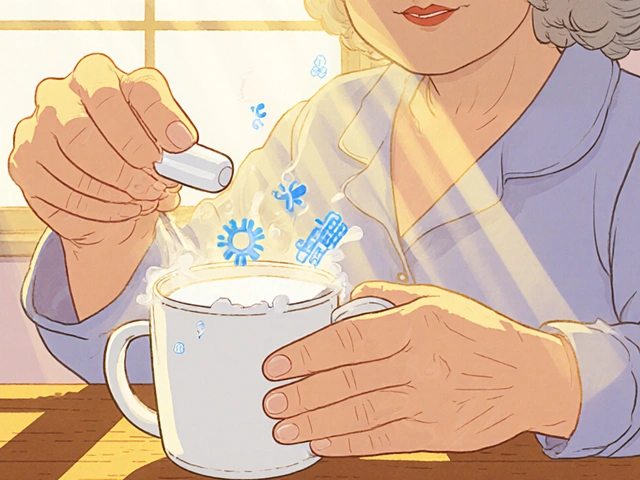
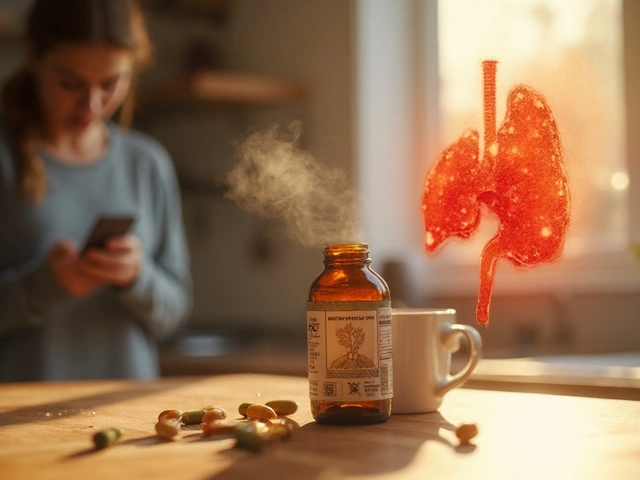

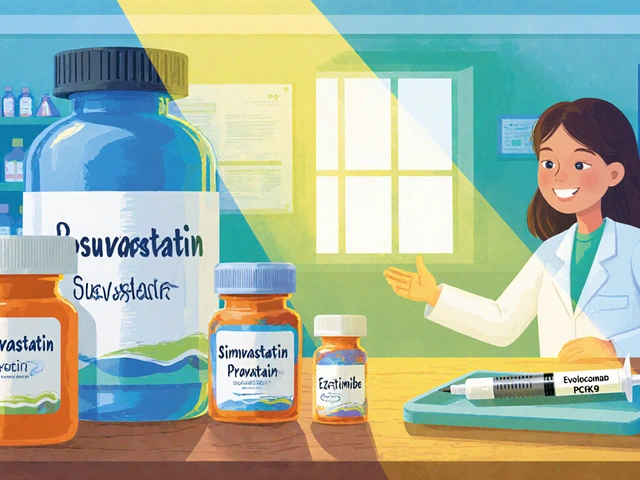

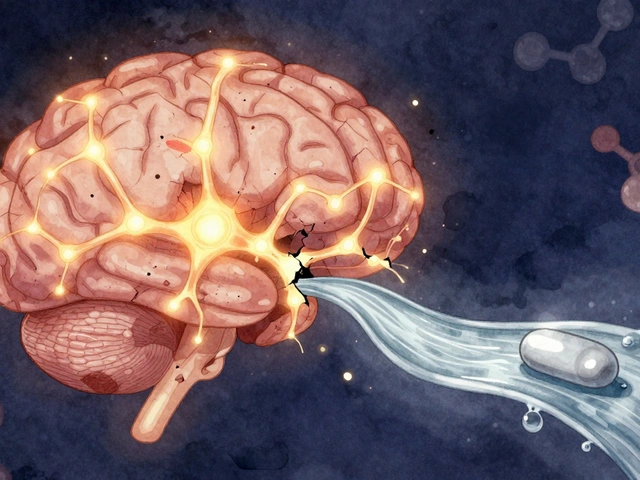
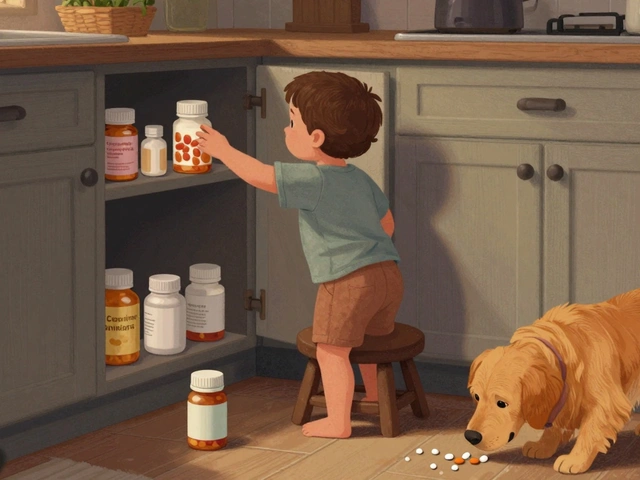


kevin burton
October 25, 2025 AT 14:29Taking a bisphosphonate is a simple step, but the details matter a lot. First, swallow the pill with six to eight ounces of plain water. Second, stay upright for at least thirty minutes after taking it. Third, avoid any food or drink that contains calcium, magnesium, or iron during that window. The reason is that these minerals bind to the medication and form an insoluble complex. That complex cannot be absorbed in the intestine, making the dose useless. A glass of milk contains about three hundred milligrams of calcium, enough to knock out most of a typical dose. Even a small piece of cheese can have a similar effect. If you drink coffee or orange juice with the pill, you also risk reducing absorption because of acid and calcium content. The official recommendation is to wait thirty minutes for alendronate and sixty minutes for risedronate before consuming anything other than water. Many patients forget this rule and lose up to ninety percent of the drug’s efficacy. Setting a phone alarm can help you remember the waiting period. Keeping a dedicated glass of water next to your bedside lamp makes the process easier. Some pharmacists even provide a printed timing chart that improves adherence. If you cannot stay upright, consider switching to an injectable like denosumab, which bypasses the gut entirely. In short, respect the timing rules, avoid dairy, and use reminders to get the full benefit of your osteoporosis medication.
Buddy Bryan
October 25, 2025 AT 15:52Listen up: if you’re serious about protecting your bones, you cannot be sloppy with the timing. Any milk, even a splash, is a direct sabotage to the drug. The calcium in dairy will bind the bisphosphonate and render it almost useless. You need to treat the fasting rule like a non‑negotiable prescription, not a suggestion. Grab a full glass of water, stay upright, and set a hell‑of‑a‑loud alarm. Don’t let convenience win over efficacy.
Jonah O
October 25, 2025 AT 17:15What if the pharma companies dont want u to know that the milk is actually a covert way to keep us dependent on higher dose drugs? The calcium in dairy is just a cover, man. They could be using the dairy industry to stockpile control over bone health. Think about it, the timing rules were introduced right after big dairy lobbyists got their way. It all adds up, even if some of the science sounds legit. Stay woke, dont let them bind your meds with calcium.
Aaron Kuan
October 25, 2025 AT 18:39Milk kills your dose. Water wins.
Brett Witcher
October 25, 2025 AT 20:02One must appreciate the elegant pharmacokinetic choreography that governs bisphosphonate absorption. The delicate interplay between gastric acidity and divalent cationic interference demands a regimen of disciplined abstinence from calcium-laden consumables. It is not merely a recommendation but a testament to the sophistication of modern therapeutics. To disregard such nuanced guidance would border on intellectual negligence. Indeed, the elegance of this protocol mirrors the very architecture of skeletal homeostasis it aims to preserve.
Benjamin Sequeira benavente
October 25, 2025 AT 21:25Absolutely spot on! Remember, consistency beats perfection. Use that alarm, keep water handy, and stay upright-small steps lead to big gains. If you slip, don’t despair-reset and keep moving forward. Your bones will thank you.
Jennifer Stubbs
October 25, 2025 AT 22:49The data clearly indicate a dramatic drop in bioavailability when calcium is present. A systematic review shows the absorption reduction can be as high as ninety percent. Therefore, the clinical guidance to separate calcium intake by at least two hours is evidence‑based. Moreover, patient adherence can be improved with simple behavioral cues such as alarms or pill organizers. The cost‑effectiveness of staying on oral bisphosphonates hinges on following these protocols, otherwise the therapeutic benefit is lost.
Zaria Williams
October 26, 2025 AT 00:12Honestly, most people just dont bother with the rules and end up wasting money. If u cant stick to 30 min no dairy, maybe u should think about a different med. It's not rocket science, just common sense. Skipping the waiting window = no point. Get on board or get out.
Charlie Stillwell
October 26, 2025 AT 01:35Indeed, the pharmacokinetic parameters are modulated by the ionic milieu, leading to a precipitous decline in systemic exposure. The resulting dose–response attenuation is clinically significant. 🎯💊💡
Ken Dany Poquiz Bocanegra
October 26, 2025 AT 02:59Sticking to the timing can feel like a hassle, but think of the long‑term payoff. A few minutes now means stronger bones later. Keep it simple, set a reminder, and you’ll be fine.
krishna chegireddy
October 26, 2025 AT 04:22The drama of the dairy conspiracy is only the surface. Behind the scenes, hidden agencies coordinate with supplement manufacturers to keep the public hooked on multiple products. The delayed‑release formulations are a ploy to make us think the problem is solved while still feeding the calcium‑rich market. It's a labyrinth of interests, and only a few see the strings being pulled.
Tamara Schäfer
October 26, 2025 AT 05:45Its realy simple, just dont take milk or any calclium source for the half hour after the pill. I think this is a good tip for all patients, thx for sharing!
Tamara Tioran-Harrison
October 26, 2025 AT 07:09Oh, how original-another reminder to avoid milk. As if we needed that groundbreaking insight from a 2023 article. 🙄 Nonetheless, my sincerest congratulations on stating the obvious with such flamboyant flair.
Max Lilleyman
October 26, 2025 AT 08:32Milk + pill = bad. 🚫🥛💊
Shannon Stoneburgh
October 26, 2025 AT 09:55The practical takeaway is clear: maintain a strict water‑only window post‑dose, avoid calcium‑rich beverages, and consider alternative therapies if adherence proves challenging. This approach maximizes therapeutic efficacy while minimizing unnecessary costs.